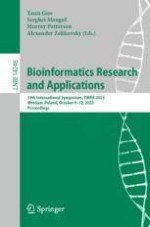2023 | OriginalPaper | Buchkapitel
Identifying miRNA-Disease Associations Based on Simple Graph Convolution with DropMessage and Jumping Knowledge
verfasst von : Xuehua Bi, Chunyang Jiang, Cheng Yan, Kai Zhao, Linlin Zhang, Jianxin Wang
Erschienen in: Bioinformatics Research and Applications
Verlag: Springer Nature Singapore
Aktivieren Sie unsere intelligente Suche, um passende Fachinhalte oder Patente zu finden.
Wählen Sie Textabschnitte aus um mit Künstlicher Intelligenz passenden Patente zu finden. powered by
Markieren Sie Textabschnitte, um KI-gestützt weitere passende Inhalte zu finden. powered by
